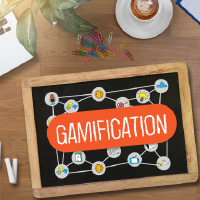 The idea of making learning interesting through our natural human tendency for creative play is a relatively new arrival to traditional means of education but has become especially important since the explosive growth of the Internet. Scholars say that games in the classroom offer students across cultures and ages an effective way to learn critical thinking, problem-solving and cooperation.
The idea of making learning interesting through our natural human tendency for creative play is a relatively new arrival to traditional means of education but has become especially important since the explosive growth of the Internet. Scholars say that games in the classroom offer students across cultures and ages an effective way to learn critical thinking, problem-solving and cooperation.
Known as “gaming” or “gamification,” this approach is backed by educational research that bears out the practical applications of providing classroom and online constructs that resemble elements of a game but do not necessitate coding or actually building a video game. It can simply mean placing knowledge in an imaginary realm or possibilities to encourage students to interact and “play” with the knowledge.
Colleges and universities are starting to take up the challenge of including gamification in their curricula, especially in online venues, as a way of engaging students more deeply and effectively in the learning process.
Games Can Enrich Education in Many Ways
In traditional classrooms, gamification can enrich your ability to provide a relevant education for your students. You can use games and role-playing to encourage students to write or create their own scenario-based problems and possible outcomes to those problems for future use in your class, or to demonstrate mastery of specific concepts covered in the course.
While applicable in the traditional classroom, the online environment also offers excellent opportunities for building one’s own story that encompasses the course material but allows room for role-playing and like-character identification, using simple software or existing market learning platforms. Some examples of how gamification is being used today in the classroom include:
- Inventing a scenario narrative of the instructor’s design that will use aspects of role-playing and gaming strategies to generate assignments and critical thinking results through the use of character avatars
- Harnessing a role-play narrative-driven scenario course using existing equipment and software or modifying a learning platform to be more play-engaging
- Using games within games in programs, such as matching, repetition, visual imagery, terrain landscapes through photography and predictability-scenario outcomes, and vocal responses (laughter, joy, fear, romance)
- Evaluating and establishing benchmark assessment markers and student feedback that deal with the problem-solving at hand, not just theoretical applications that could be applied
- Integrating narrative creation with existing support websites (discipline-specific websites) and game programs such as surveys, mock testing, or grouping feedback programs that already exist
Gamify Your Classroom Today
Join “Gamification: How Role-Playing Techniques Can Help Students Excel,” an audio conference sponsored by Eli Education, a division of AudioSolutionz, presented by expert educator and consultant Dr. Thomas Eaton, where he shows you how to blend an instructor’s expertise in any field with concepts of game play. In this session, instructors will learn how to build courses into a story where students participate as characters, and how to access the information to make and present findings and possible outcomes in problem-solving and information applications.



